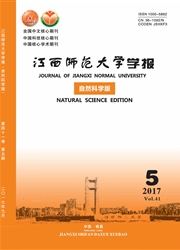

 中文摘要:
中文摘要:
建立了粉尘螨小鼠过敏性鼻炎模型,观察粉尘螨疫苗免疫治疗鼻黏膜超微结构的变化,探讨粉尘螨疫苗免疫治疗的疗效.将24只BALB/c小鼠随机分为阴性对照组(A组)、过敏性鼻炎模型组(B组)、粉尘螨疫苗治疗组(c组),按本室常规方法建立尘螨过敏性鼻炎小鼠动物模型,观察抓鼻、流涕、喷嚏等症状,末次激发24h后,麻醉小鼠,眼窝取血,ELISA法检测血清中Derf特异性抗体IgE和IgG2。;取鼻黏膜组织固定,切片、电镜观察.结果表明:建模后B组、C组均出现典型的喷嚏、流涕、抓鼻症状,但粉尘螨疫苗免疫治疗组较模型组症状明显减轻,正常对照组无任何行为异常.与B组相比,c组血清中Derf特异性抗体IgE显著降低(P〈0.05),而B组和C组IgG2。的含量较A组显著增高(P〈O.01).电镜观察:(1)正常对照组:嗅黏膜上皮细胞,表面有大量纤毛,排列整齐;胞质内细胞器丰富.(2)过敏性鼻炎组:嗅黏膜上皮细胞肿胀,嗅细胞表面的纤毛减少或消失,细胞排列紊乱、细胞间有炎症细胞浸润,细胞器退变、空泡化,核变形不规则、固缩.(3)粉尘螨疫苗免疫治疗组:嗅黏膜纤毛排列较整齐,粗细较均匀,纤毛密度较正常对照组低,线粒体致密,与空白对照组相比数量增多.粉尘螨疫苗可以有效改善过敏性鼻炎的症状,抑制过敏性鼻炎鼻黏膜炎症变化.
 英文摘要:
英文摘要:
To observe the ultrastructure of nasal mucosa from mice with rhinitis allergic to dust mites with the potential to evaluate the effectiveness of dust mites vaccine immune therapy. 24 BALB/c mice were randomly dividedinto 3 groups including negative control group (group A), allergic rhinitis group (group B) and dust mites vaccine treated group (group C). Mice rhinitis models allergic to dust mites were established by using the conventional method in our laboratory. The allergic symptoms including scratching nose, running nose and sneezing were observed after challenge. After being sacrificed by anesthesia at 24 h time point, the orbital blood were harvested for quantifying serumal specific IgE, IgG and IgG2a antibodies by using ELISA and right lower pulmonary tissues were dissected and treated for electron microscopy.Both group B and C manifested typical sneezing, runny nose and nosescratching symptoms before treatment and the former symptoms reduced significantly after dust mites vaccine therapy, in contrasct no behavior abnormalities was observed in group A. Compared with group B, in group C, the content of serumal specific IgE antibody to Der f significantly decresed whereas those of IgGl and IgG2a increased significantly (P〈0.05). Electron microscopy showed that in (1) group A, olfactory epithelial cells with integrate basement membrane regularly aligned on which surface abundant cilia covered regularly and in whose cytoplasm various organelles were scattered including ribosomes, mitochondria and rough endoplasmic reticulum in the cytoplasm; in (2) group B swelled olfactory epithelial cells with disordered basement membrane irregularly aligned on which surface rared cilia covered, in whose cytoplasm degenerated and vacuolize organelles, irregular, deformed and shrinked nucleus distributed, and among which inflammatory cells infiltrated, and in (3) group C, olfactory epithelial cilia aligned regularly with more uniform size though the density of cilia was lower than that of normal
 同期刊论文项目
同期刊论文项目
 同项目期刊论文
同项目期刊论文
 期刊信息
期刊信息
